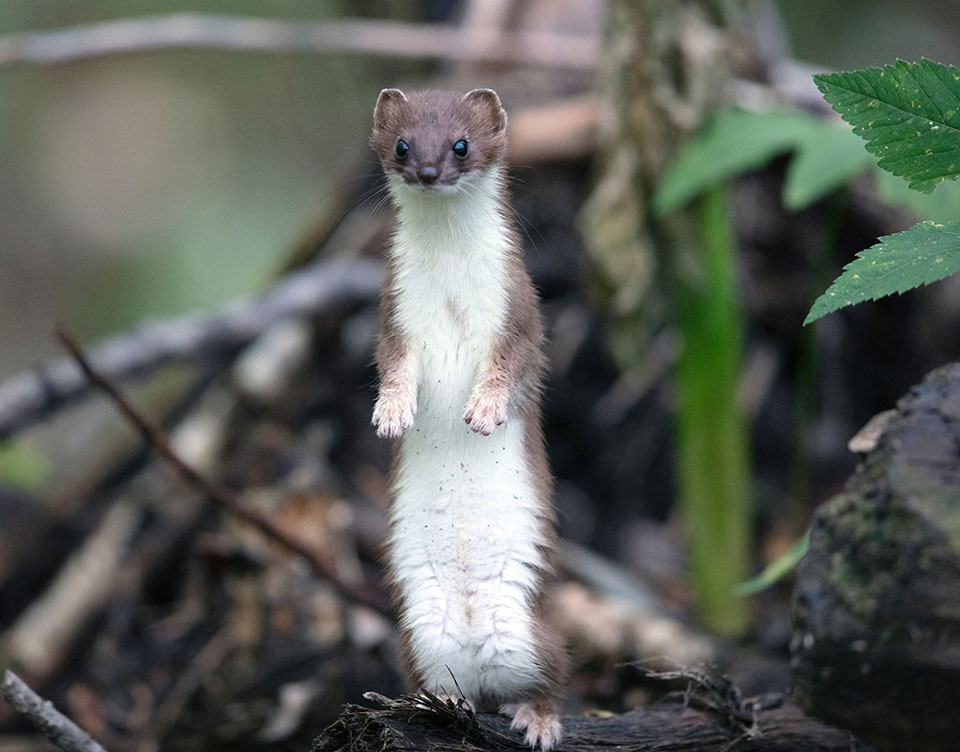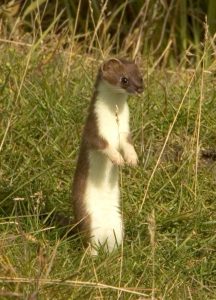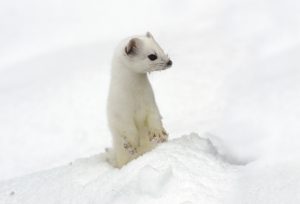Magical Mustelids

Grand Teton National Park is home to many types of small mammals, including the Magical Mustelids. This family of fearless carnivores includes badgers, fishers, martens, mink, river otters, wolverines, and three weasels: the least weasel, the long-tailed weasel, and the short-tailed weasel or ermine.
The short-tailed weasel measures between 7 and 13 inches including the tail, and despite their diminutive size, they really believe themselves to be quite tough. I remember one little guy I saw while hiking with some clients along the river – he bravely held the trial against four much-larger mammals, and would not let us pass. It turns out the weasel symbolizes courage in many Native American cultures. Even though they are small and only weigh up to 12 ounces they will readily attack larger animals. They are effective hunters, preying mostly on mice and voles. (Researchers rely on the presence of weasels as an indicator of an abundant rodent population.) They are also terrific climbers, so our avian friends are not immune to their predatory survival strategies.
How does the little short-tailed weasel survive the long cold winters in Jackson Hole? Food, shelter, and companionship are critical. With their long bodies, low weight, and lack of body fat, weasels have some distinct disadvantages during the long winter months. They must keep warm by eating up to 40 percent of their weight every day, and may occasionally engage in “killing sprees” so that they can store leftovers as a hedge against days without any kills. They use up a lot of energy during a hunting day, covering as many as three miles in their quest for prey. How does the Small-tailed weasel negotiate the winter landscape?
During the summer months, the short-tailed weasel is brown. As winter approaches, the weasel’s coat changes to white, except for the tip of the tail, which is black. It turns out that the white winter hair is thicker than the brown summer hair, and helps keep the weasel warm because melanin, the substance responsible for colored hair, is absent from white fur, leaving air spaces in the hair shaft creating insulation. Also, the white hair acts as a natural camouflage to aid the weasel in hunting. The winter white fur is known as ermine (as is the weasel during this winter white phase) and was highly prized by coat and hat makers throughout history. King George VI’s coronation robe reportedly was constructed from the furs of 50,000 ermine.
There is a genetic component to the color change. Weasels from the southern United States don’t undergo a color change even if they’re moved to the north, and northern weasels will become white in winter even if they are transplanted to the snowless south. And what about that black tail? Researchers have discovered that hawks will attack a stuffed weasel by striking its head. If the black tail is visible, the hawk with avoid attacking, or will attack the weasel’s tail, leaving it vulnerable to retaliation. So there you have it. A thick layer of fur for warmth, a classy winter white for camouflage, and black tail to confuse predators is all you need to make it through a Jackson Hole winter. And if you are not a Magical Mustelid? A snow plow comes in handy, too!


